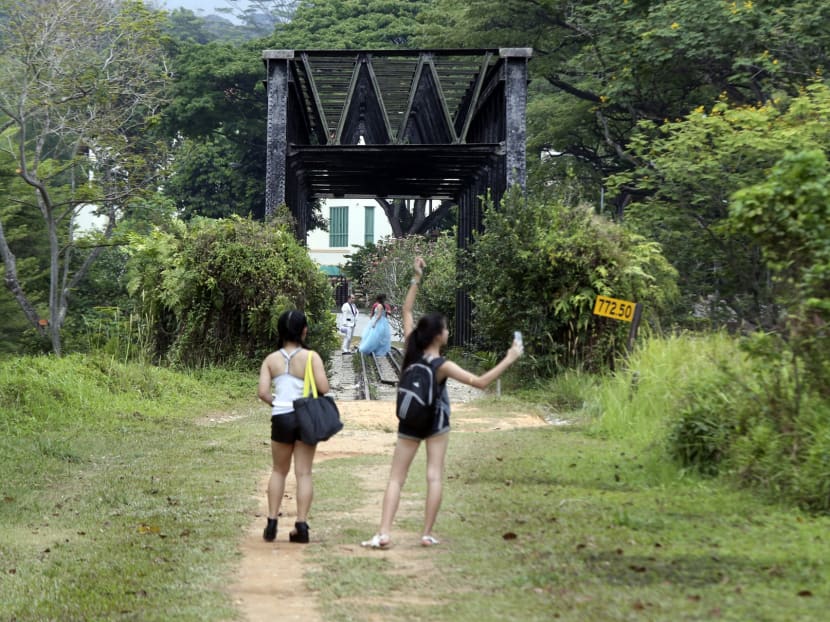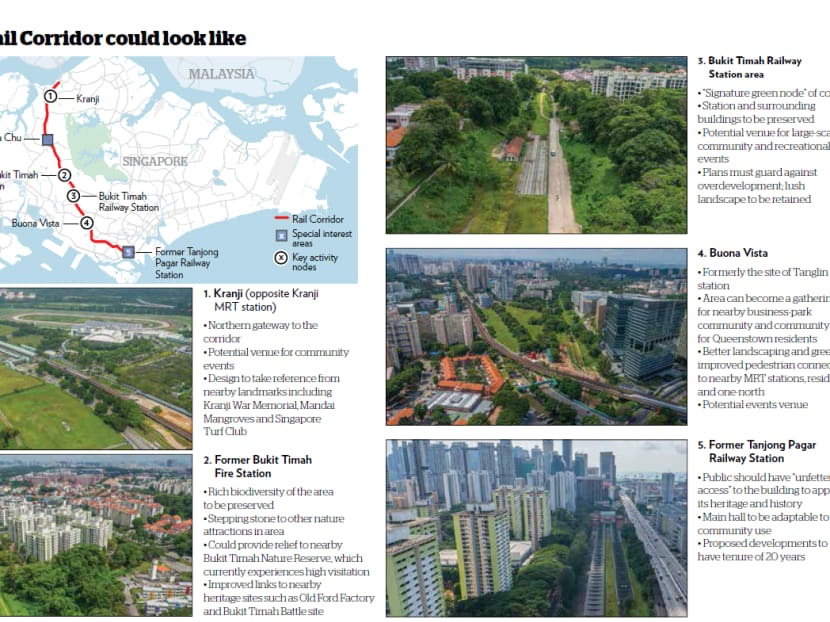Accessibility key for Rail Corridor master plan
SINGAPORE — Straddling the width of Singapore, the 24km-long former railway track that spans Tanjong Pagar to Woodlands will be preserved as a continuous track featuring lush greenery and its rail heritage, while six sites have been identified to serve as gateways and community spaces for mass events.


SINGAPORE — Straddling the width of Singapore, the 24km-long former railway track that spans Tanjong Pagar to Woodlands will be preserved as a continuous track featuring lush greenery and its rail heritage, while six sites have been identified to serve as gateways and community spaces for mass events.
And those interested in bidding to develop a master plan for the entire Rail Corridor — which traverses seven constituencies and could link one million residents — will have to ensure the corridor is accessible to the public, accommodating runners, walkers and cyclists alike in a safe way. Amenities such as lighting, water points, toilets, and food and beverage outlets could also be added along the stretch.
The greenery and biodiversity of the area should also be enhanced by planting more native or suitable plant species in a “judicious” way. Where vegetation has been removed, regenerative planting should be done and new habitats for wildlife created.
And bidders should draw up strategies to protect against “visual intrusion” from developments in the surrounding areas, and consideration be given to preserving the corridor’s “desirable vistas and views”.
These details were revealed in the Request for Proposal (RFP) brief launched by the Urban Redevelopment Authority (URA) yesterday after three-and-a-half years of public engagement, outlining requirements and key considerations for interested parties.
Apart from considering the nature, heritage and connectivity elements in their design plans, teams have to propose concept designs for the six activity sites — four “key activity nodes”, and two special interest areas.
The four key activity nodes — Buona Vista, the Bukit Timah Railway Station area, the former Bukit Timah Fire Station and the Kranji area — were chosen because they are next to major transport nodes and are slightly larger, said URA senior director (physical planning) Tan See Nin on a site visit ahead of the RFP launch.
Formerly the site of Tanglin Halt station, the Buona Vista node for instance, should not only be a gathering point for the nearby business-park community, but should also capture the area’s railway heritage. Being next to Buona Vista MRT interchange station also makes it suitable for events.
The two special-interest areas are the former Tanjong Pagar Railway Station and a site in Choa Chu Kang that may be developed as part of a housing precinct. Beyond these six sites, smaller sites can be added along the way. “Backyard” spaces should be set aside for communities living near the corridor for recreation and leisure.
To ensure seamless connectivity and the safety of users, the Government will ensure any future road crossings affecting the corridor will be built as overpasses or underpasses. Improvements to the former railway truss bridges to facilitate crossings may also be considered.
While the Rail Corridor is being used by some nature lovers, Mr Tan noted that, by and large, the public does not visit the area. “Partly, I think the problem is they have no sense of how to get to this place and (whether) it is safe. There (are) no facilities in this area, no proper pathways.” The URA noted that many stretches of the corridor are almost not walkable during wet seasons.
Before the master plan is implemented, Mr Tan said the URA would work with the Singapore Land Authority to put in place proper signage to encourage people to enter the Rail Corridor in the interim. The guidelines have been drawn up based on feedback from stakeholders and the public since the land was abandoned in 2011. In the RFP documents, the URA said the corridor “cannot be all things to all men”, but the length of the space would probably allow for most of desirable features that the public wants to be incorporated.
Nature Society (Singapore) vice-president Leong Kwok Peng said the society had been concerned about the impact of developments on the Clementi forest near Bukit Timah Railway Station. He said he is satisfied that the RFP documents require the node to retain its green expanse. The society’s president Shawn Lum also sits on the 11-member evaluation panel to assess the submissions. Other members include URA, NParks and HDB.
No timeline was given on when the plans would be realised. The submission deadline for Stage 1 of the RFP is April 23. Submissions will be shortlisted in May and the public will be able to view them and give feedback through a public exhibition from October to December. Up to three teams can be shortlisted to handle different aspects of the project, namely the overall Concept Master Plan, development of former Tanjong Pagar Railway Station and development of the Choa Chu Kang site. Between March and May next year, one selected team will come up with a preliminary design for a 4km “signature stretch” that has yet to be announced by the URA.






